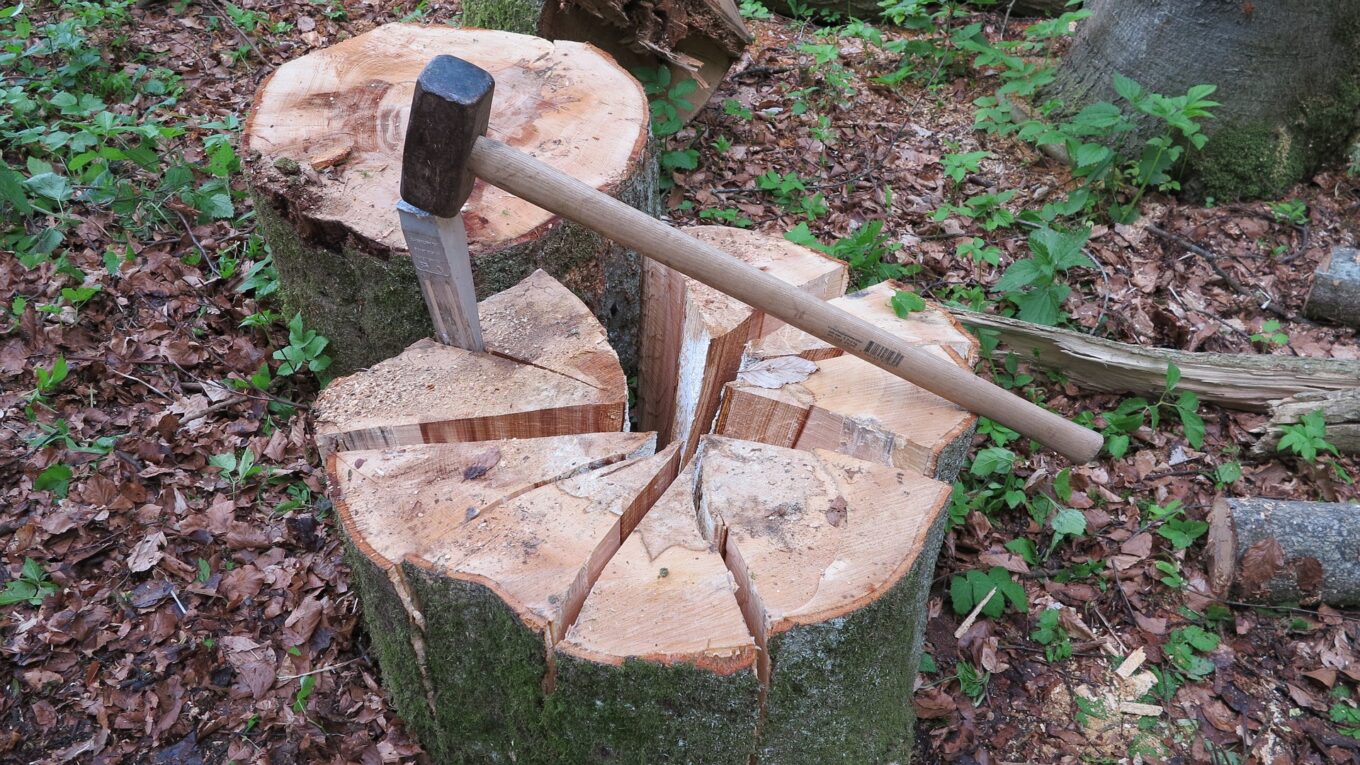Why ‘wedge’ it open?
I’m thinking more about the use of a wedge as a metaphor for shifting scholarship and academic learning into the open. My conception of what a wedge does or how it can be used comes from my experience with chopping wood for a fire. Splitting logs into chunks to create fire-sized pieces that support the open flame with a stackable structure of a campfire or wood stove can be hard work. Having a wedge shaped wood-splitter is often a handy tool to make the log split into smaller sections, particularly when there is a branch or knot obstructing your efforts. The metal wedge acts as a mechanical aid to breaking the log open, creating smaller units to be used for its intended purpose.
An alternative way of looking at a wedge is when you consider this shape as a mechanical aid to lifting or holding objects in place. When inserting a window into a frame, a wedge will help ensure the window sits straight in the frame, holding it in alignment so the installer can secure it safely. Likewise, a wedge on a shoe will lift and hold an individual brave enough to stand tall on the wedge-like block into a position of increased height. The rounded wedge shape of an airplane wing will lift and hold a daunting amount of weight on the seemingly nothingness of air. These wedge shaped objects have purpose and function, not to split or separate, but to support purposeful actions that shape our everyday lives.
So, how can a wedge refocus my thoughts on open scholarship and academic learning?
Will a wedge split something apart or will it hold and support ideas in some sort of framework? Or can it do both simultaneously?
Here’s a conference session proposal I wrote a while back which was never submitted. I’m putting it here to let it sit in the open and perhaps wedge others into joining in opening this metaphor to deeper discourse.
Consider this presentation as a wedge to open praxis. This presenter models an open educational practice as a teacher and learner while heeding Freire’s caution that true reflection leads to action (Freire, 198). Without reflection, action becomes activism (Freire). Rose (2013) envisions reflection as a “form of thought, emerging in conditions of solitude and slowness, in which the mind engaged in a synthesizing process that tends to produce original ideas, insights, and perspectives”. Unfortunately, reflective practice in today’s rapidly changing and highly pressured academic endeavours are more likely to represent action without reflection. Rose suggests that reflective practice can be cultivated. Applying reflective practices in the open can provide a wedge to improve actions in academic processes, productions, and presentations, as outlined in Gogia’s (2016) vision of open scholarship. Wedges are triangular tools used to provide mechanical advantage. They are customarily used to separate or split things open, but in this presentation, this practitioner of reflection will re-visioned wedges as tools that lift and hold things in place, as the wedge of an airplane wing suggests. Through personal examples of wedge-events, this presenter may crack open some ideas about reflective practice in scholarship and practice in open educational experiences.
